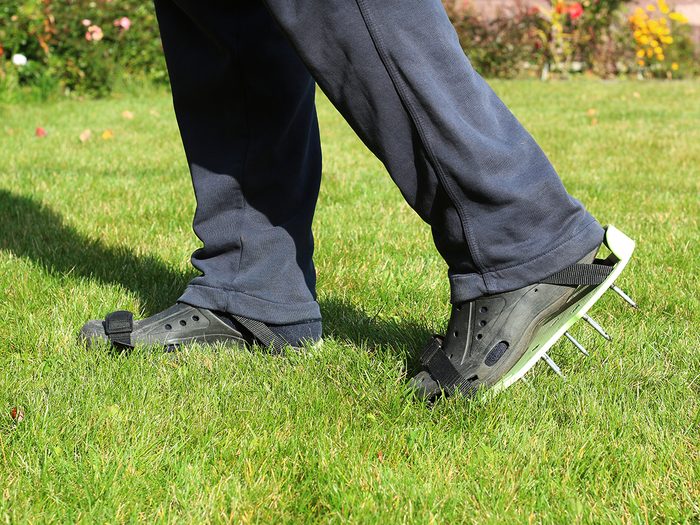
Don’t skip aerating
Most lawns, whether seeded or sodded, are planted over a fairly skimpy layer of topsoil. Over time, lawn mowers, pets, and pick-up football games compact the soil, making it difficult for air, water, and vital nutrients to penetrate to the grassroots. To loosen the soil and restore healthy soil conditions that nurture your lawn, nothing beats aerating. For a large lawn, try a power core aerator. They’re available at rental centres, plus some hardware stores and garden centres.
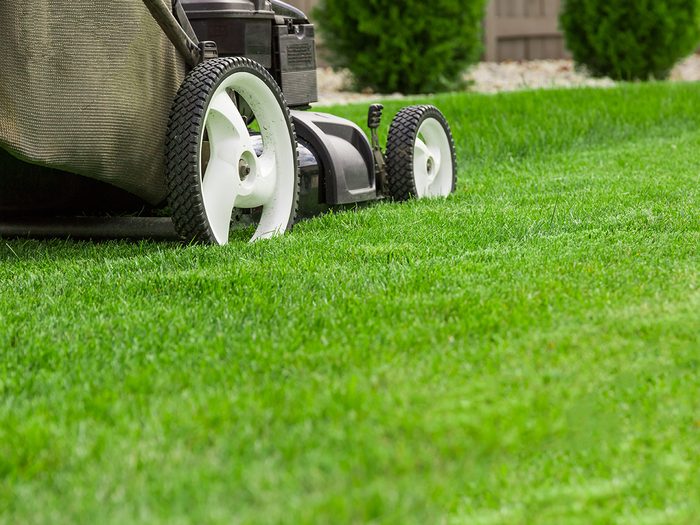
Don’t use a dull mower blade
Dull mower blades rip through the grass blades instead of slicing them cleanly, and that stresses the plant. You can always tell a lawn that’s been mowed with a dull blade because it looks brown on the top. Get on your hands and knees and you can actually see the damage. Be sure to sharpen your mower blade each season to keep your lawn in good shape.
Chances are, your mower could use some more maintenance. Here’s what you need to know about lawn mower oil.
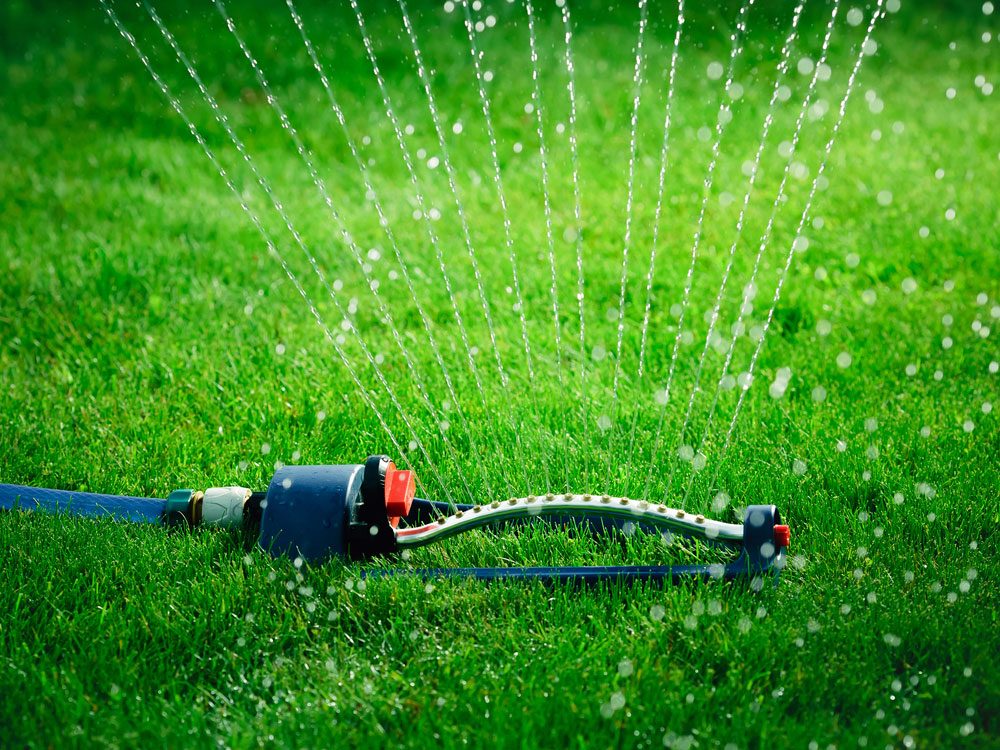
Don’t water every day
Did you know your lawn can actually get dependent and needy if it has too much water? Instead of watering every day for 15 minutes, choose one day a week to water the lawn for an entire hour. Your lawn will be watered deeply, and it will be healthier and more drought-tolerant.
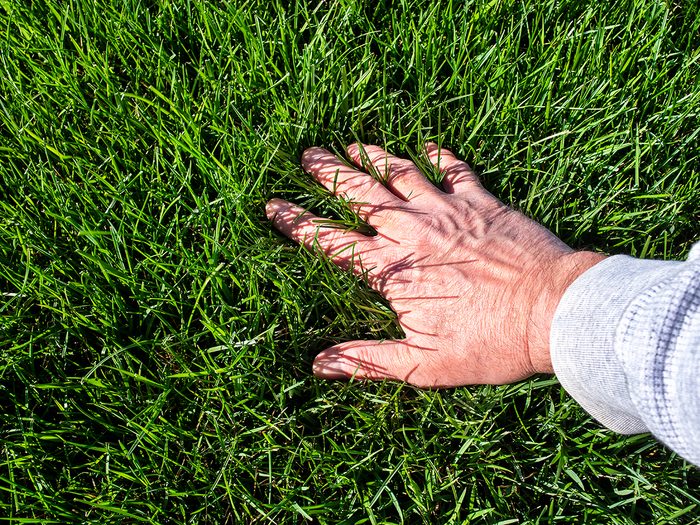
Don’t wait too long between mowing
If you came back from a vacation and the neighbour neglected to mow your yard, don’t try and mow it down in one day. Cut off some of the length and then wait a couple days and mow again. This will cause less stress on the grass. You may need three passes depending on how long the grass grew.
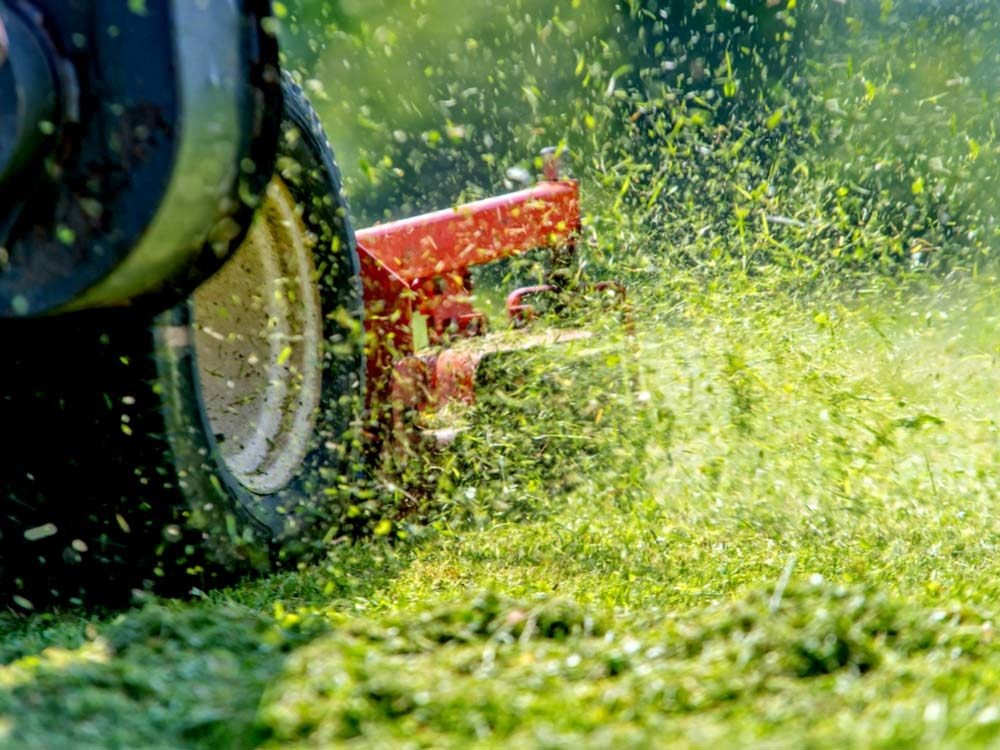
Don’t cut grass too short, either
Every grass type has an optimal cutting height, and you’re better off on the high side of that height. Here are a few reasons: The grass blade is the food factory of the plant. Short blades just can’t generate as much food as long blades. Long blades also shade and cool the soil. That means weed seeds are less likely to sprout, and you won’t have to water as often because water won’t evaporate as fast. Not sure what type of grass you have? Take a sample to a garden centre for identification.
Ready to get growing? Don’t miss these helpful hints for starting a garden.
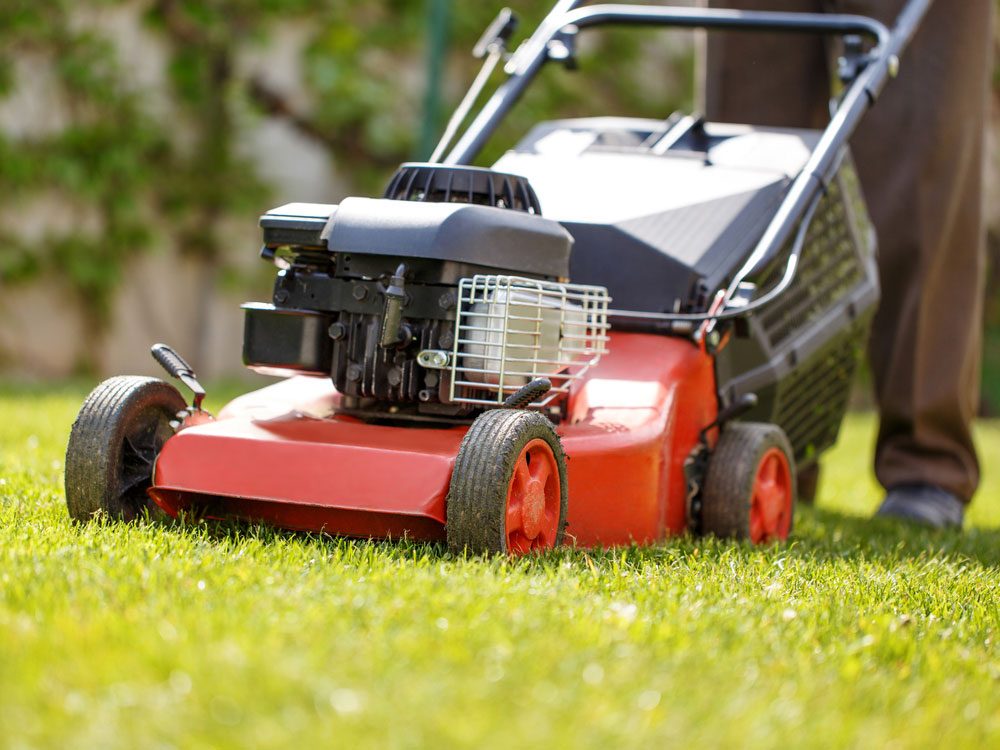
Don’t mow in the same direction every time
Instead, mow in a different direction every time: front to back, back to front, diagonal, etc. Repeatedly mowing the exact same way will cause the grass blades to grow at an angle, and you may develop permanent tracks from the mower wheels.
According to some landscaping experts, this is the most efficient way to mow a lawn.
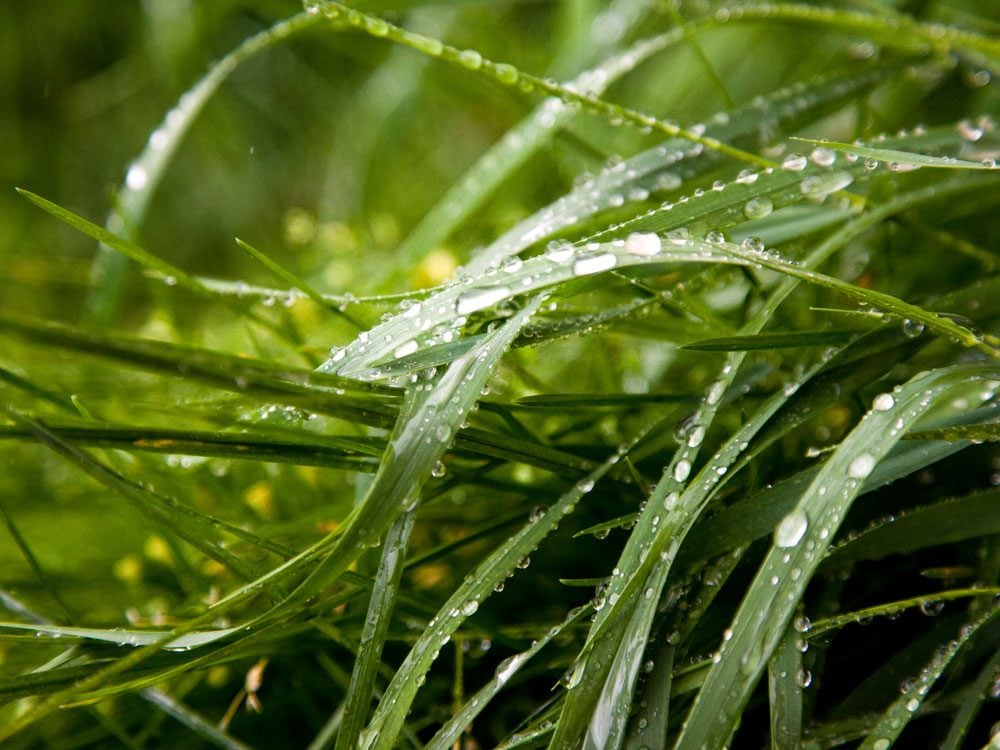
Don’t cut wet grass
Mowing wet grass can cause the mower wheels to leave ruts in your yard, and you could leave behind giant clumps of clippings that could smother the grass beneath. Not to mention, the wet grass will carpet the underside of your mower deck with a thick mat that’s a pain to clean.
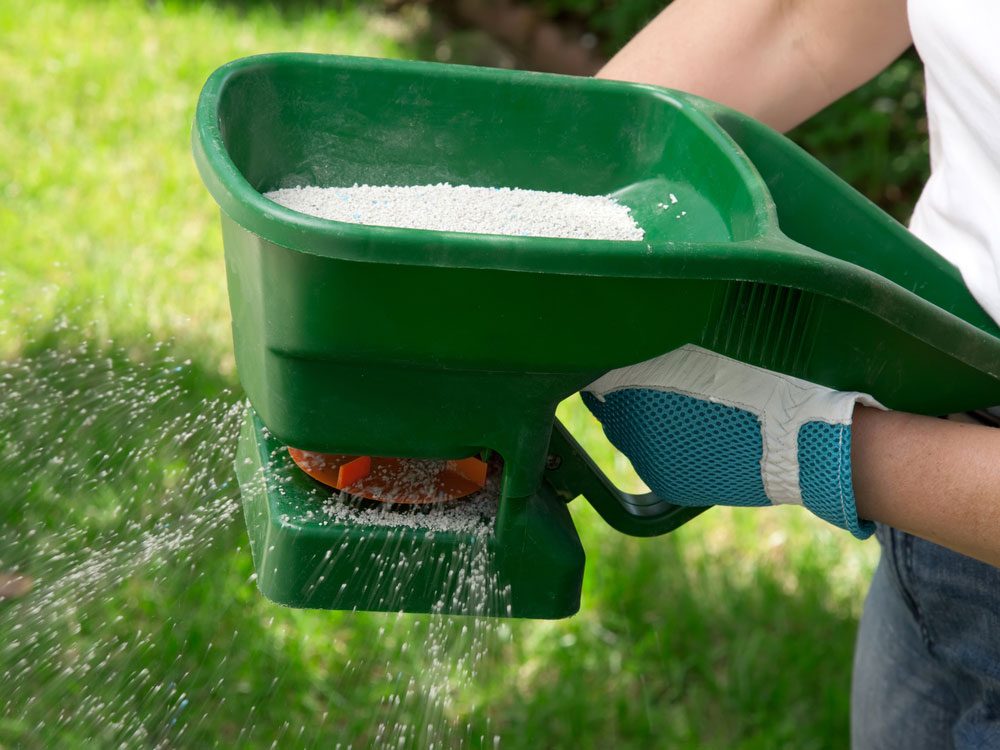
Don’t overfeed
If you apply too much grass fertilizer, especially in sandy soils, a good share of it will leach through the soil and make its way into our precious groundwater, lakes, streams and wetlands. Lawn grasses only need a certain amount of food. More isn’t always better.

Don’t ignore pet areas
Dog spots are round patches about four to eight inches in diameter with dead grass in the middle, encircled by dark green grass. They’re most apparent in the early spring when dormant grass first begins to turn green again. You have to replant your grass; it won’t come back on its own. But first, you have to dilute or remove the caustic urine from the soil. Thoroughly soak the area with lots of water.
Try this genius hack to patch lawn gaps.
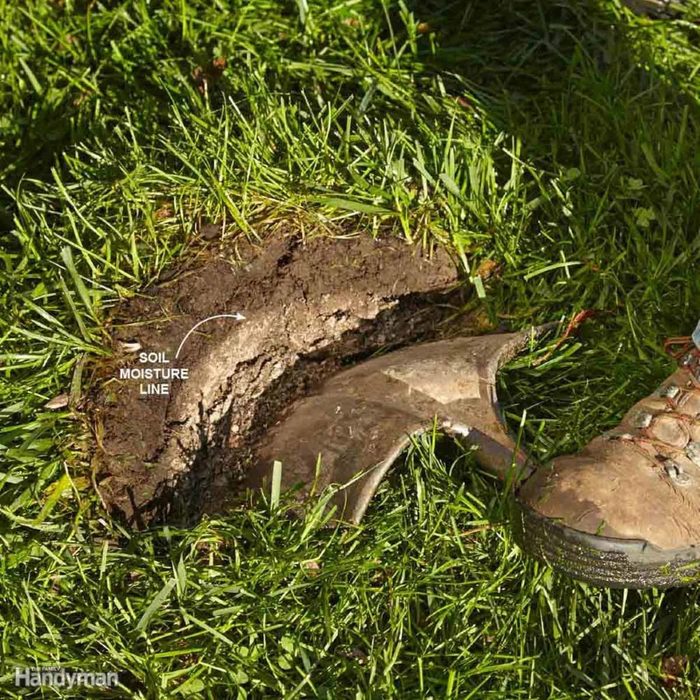
Don’t forget to check soil moisture
Common wisdom for establishing the correct length of time to water is to place a pie pan in the yard and note how long it takes the sprinkler to fill 1/2 in. deep. But experts prefer a more accurate method that takes soil conditions into account. Heavier soil doesn’t absorb moisture nearly as fast as loose or sandy soil, so it needs to be watered longer.
After an extended warm, dry period (dry soil is the key) set up your sprinkler and set a timer for 30 minutes. Then turn off the water and check the soil for moisture depth. Do this by pushing a shovel into the lawn and tipping it forward to expose the soil. See how deep the water has penetrated. Moist soil will be darker. Your goal is to run the sprinkler until the water penetrates 3 to 4 in. into the soil.
If the water has not penetrated far enough, restart the watering and continue to keep track of the time. Check again in another 15 minutes. With trial and error, you’ll eventually arrive at the optimal length of time to water for your soil type and water pressure.
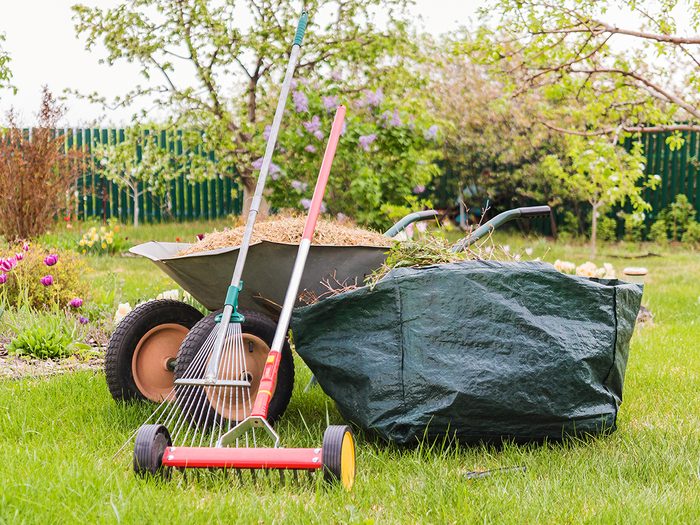
Don’t forget to dethatch
Thatch is a layer of slowly decomposing grass stems, roots, clippings, and debris that accumulate at the soil surface over time. It can build up in your lawn and virtually choke it to death. Excessive thatch buildup is commonly found in lawns that have been overfertilized or overwatered and have never been aerated. Thatch buildup of 3/4 in. or more will restrict water and nutrient penetration into the soil (think thatched roof) and can harbour disease organisms that can increase the need for pesticides. Slice open a section of turf. If the thatch is more than 3/4 in. thick, take action.
Interested in going green? Consider these organic lawn care tips.
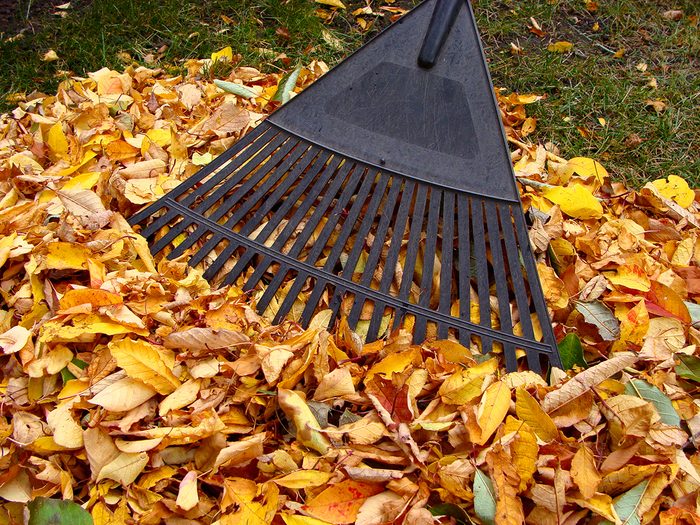
Don’t remove all fallen leaves in the autumn
Leaves have organic matter in them that is great for your soil. It works as a natural fertilizer, helping your grass to grow the following year. According to Sam Bauer, a turf grass researcher from the University of Minnesota, it can even suppress the growth of weeds as well. He recommends mulching the leaves by using a lawn mower (specifically with a specialized mulching blade, if you have one) over the leaves to cut them up. However, if you have huge piles of leaves on your lawn, it may be hard to mulch all at once (and yes, can smother your grass). Remove those piles until you have a good dusting of leaves around your lawn before mulching with your mower.
Next, check out our best-ever gardening tips to save time and money.